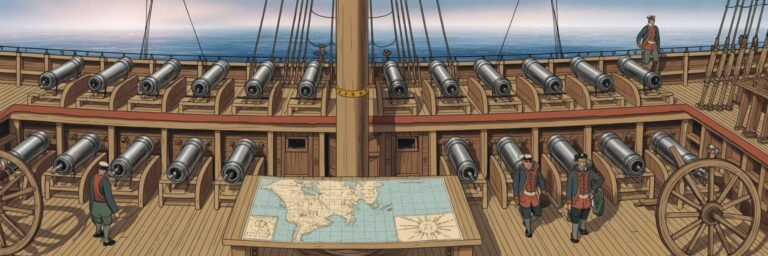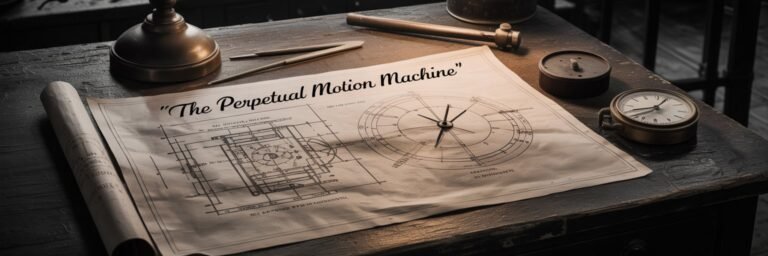INTRODUCTION
The engrossing world of historical mysteries is a labyrinth where history and myth intertwine, creating an intricate pattern of realities, half-truths and illusions. Within this intricate network exists a subgenre alive with intrigue and inscrutability – the dynamic interplay between propaganda and power. In this realm, propaganda is not just a conduit of misinformation; rather, it is a medium of power assertion, a tool utilized by different historical actors to cement their standing, obscure their motives or awaken popular consciousness. In this exploration, we’ll dissect the ways in which power and propaganda interact across a broad spectrum of historical mysteries, interrogating the unfolding narrative and tackling the controversial theories.
HISTORICAL BACKGROUND
The path under our feet was first laid in the time of Alexander the Great, when the propagation of his divine birth and destiny helped in legitimizing his reign and conquests. It was this prolonged form of propaganda that helped Alexander become a figure of reverence that survived well beyond his mortal years. This historical precedent would be followed by leaders, religious orders and secret societies throughout the ages, from Europe’s medieval times, through the murky waters of Renaissance politics, and into the age of revolutions.
In the middle ages, the Catholic Church employed propaganda to permeate power structures, influencing the cultures and politics of various kingdoms. In contrast, secret societies like the Freemasons used symbols and rituals as propagandist tools to attract and consolidate their membership, constructing elaborate tales of their ancient origins and divine missions.
THEORIES AND INTERPRETATIONS
While mainstream historical interpretation of propaganda places at its heart the notion of influence and control, there is a lesser-known idea that looks at propaganda as the expression of a society’s collective unruly subconscious. This theory, championed by Michael Foucault and others, posits that propaganda is often the manifestation of suppressed histories and alternative narratives that challenge the dominant discourse.
Applying this to power dynamics, the theory suggests that propaganda can also be a tool of the disempowered, who use it to spread dissent and disrupt established power structures. Russian historian Alexey Yurchak embraces this concept in his discussions of late Soviet society, where irony and double entendre encoded in state propaganda were co-opted by citizens for their satire and resistance.
MYSTERIES AND CONTROVERSIES
Few historical mysteries encapsulate the collision of propaganda and power as vividly as the whisperings about the medieval order of the Knights Templar. Mainstream interpretations depict them as warrior-monks devoted to Christian pilgrim protection. However, theories about their occult practices, vast wealth, and secret motivations play into the intrigue. Conspiracies paint them as possessors of the Holy Grail, the Ark of the Covenant, and knowledge that could destabilize the church’s authority.
A modern parallel can be found in the ambiguities surrounding the infamous Roswell incident of 1947. The U.S. government’s oscillation between admission and denial of an extraterrestrial crash have resulted in an intricate web of interpretations and theories, where propaganda becomes the linchpin of power assertion.
SYMBOLISM AND CULTURAL SIGNIFICANCE
Sheer propaganda is often steeped in symbolism, layering messages with deeper cultural significance. The swastika, appropriated by the Nazis as a symbol of Aryan supremacy, was originally a sacred emblem in Hinduism and Buddhism. Its perversion illustrates the way propaganda can reshape symbols to serve a political ideology.
Similarly, the Soviet Union’s showcasing of its space race victories wasn’t just a scientific pursuit, it was a symbol of ideological supremacy, a propaganda tool fashioned to demonstrate communism’s triumph over capitalism. These shifts in symbolism not only shaped political discourse, but also profoundly impacted societies – even those at a distance.
MODERN INVESTIGATIONS
Modern research approaches these mysteries with a trove of analytical tools. Historians employ lexical analysis to piece apart propagandist speech, while anthropologists decipher cultural subtexts. Sociologists and psychologists explore underlying societal pressures and fears that fuel the creation and acceptance of propaganda.
Revelations from these investigations shed light on less-explored phenomena, revealing the likes of subtle propaganda within public education systems, or the pervasive influence of media monopolies – forms of ‘soft power’ unexpectedly wielding vast control.
LEGACY AND CONCLUSION
The legacy of propaganda’s dance with power is multifaceted. At worst, it distorts reality, manipulating societies and history itself. At its best, it challenges us to question accepted truths, to recognize the constructed nature of history, and to foster a critical understanding.
Propaganda, as an instrument of power, continues to evolve in the era of digital technology, playing its part in wars, politics, and even managing public health crises. Grappling with its historical mysteries thus equips us with crucial lessons about power dynamics, information control and cultural narratives, preparing us for the unknown contingencies of the future.
Unraveling the intricate tapestry of propaganda and power in history, we thus find ourselves on a perpetual journey, tiptoeing around the edges of mystery, hurtling past the precipice of the known to confront the echoes of a complex, layered past. Armed with this understanding, the historical and societal implications of propaganda become all the more potent, casting their long shadows on the annals of human civilization.






